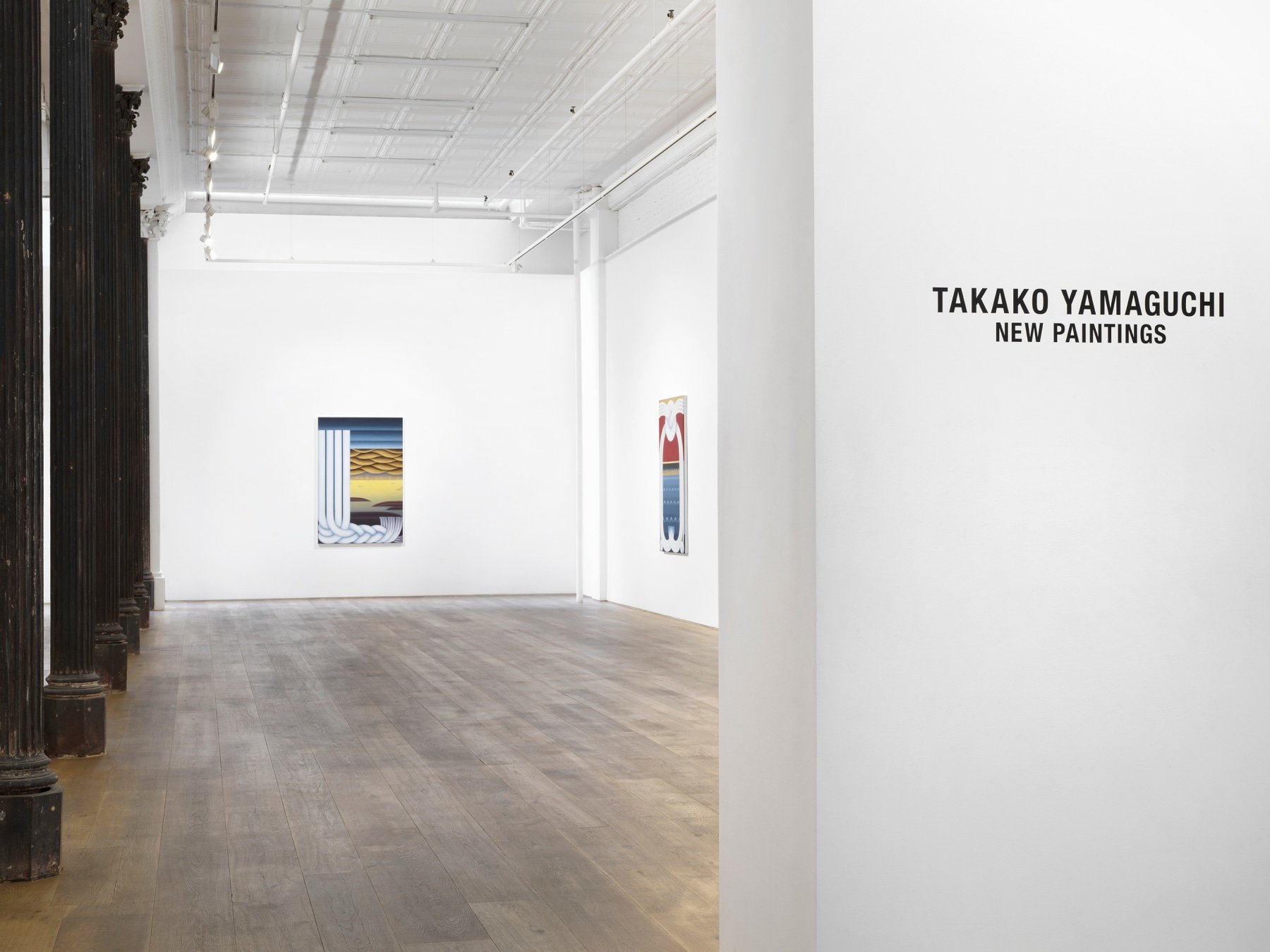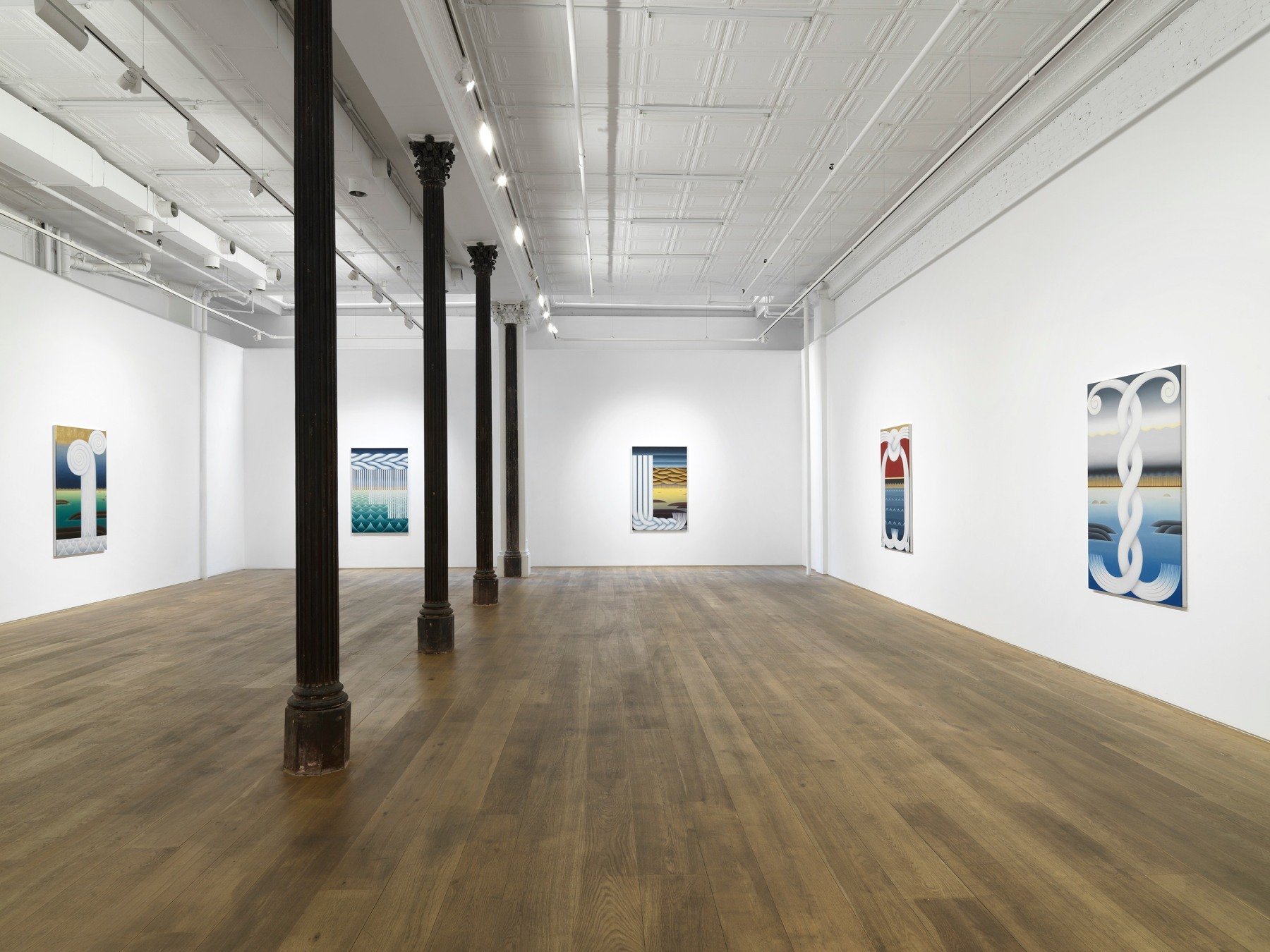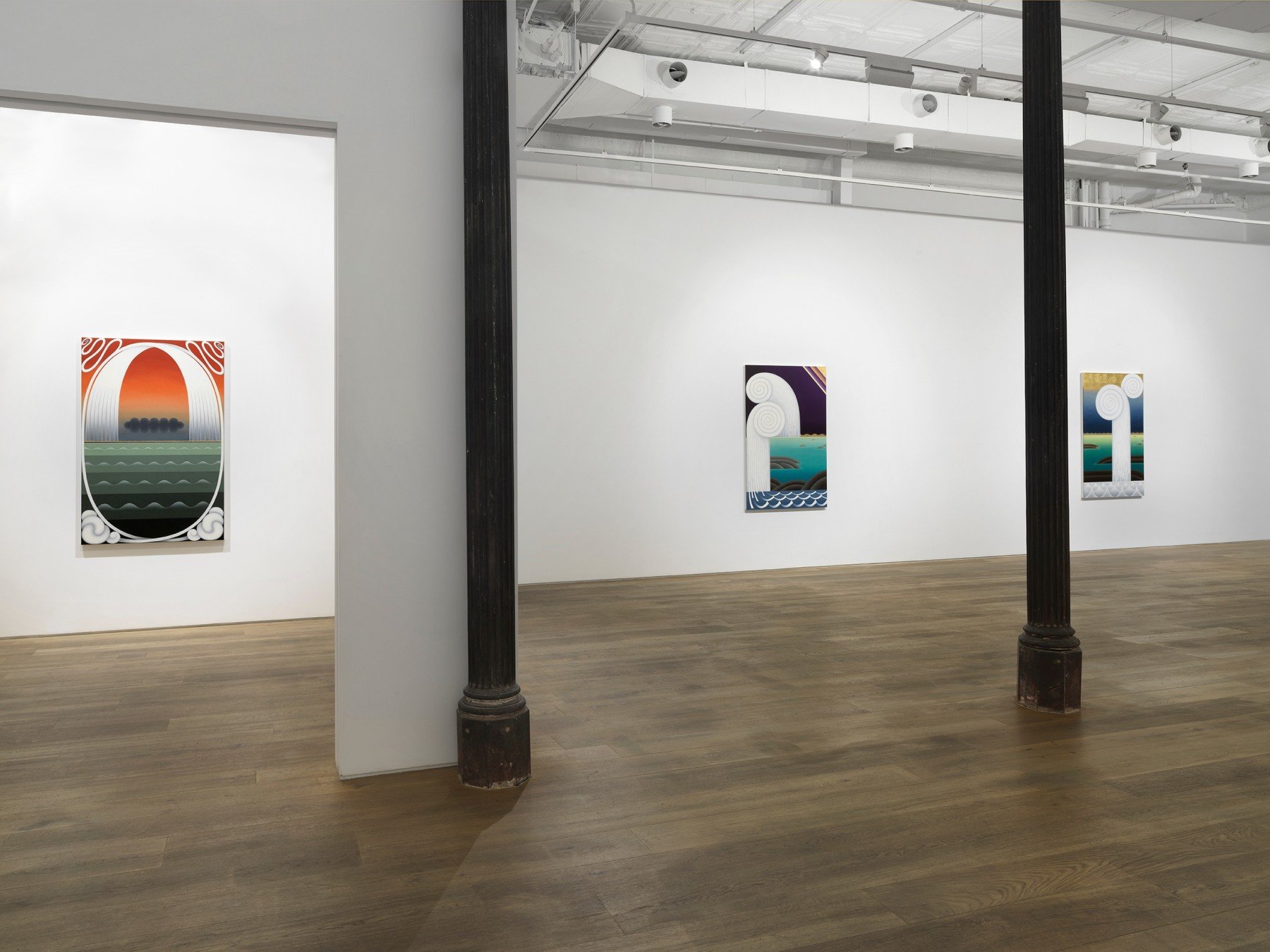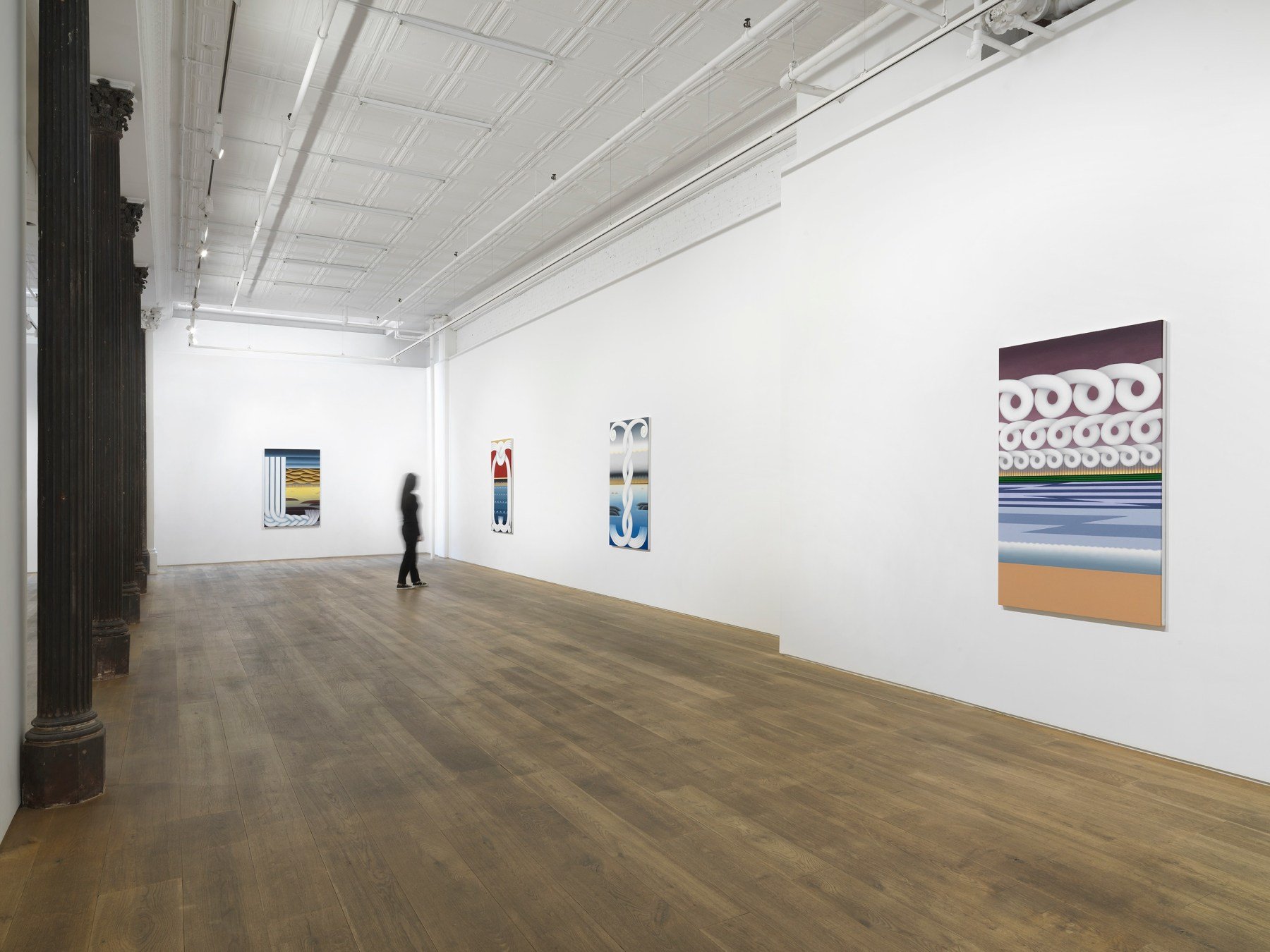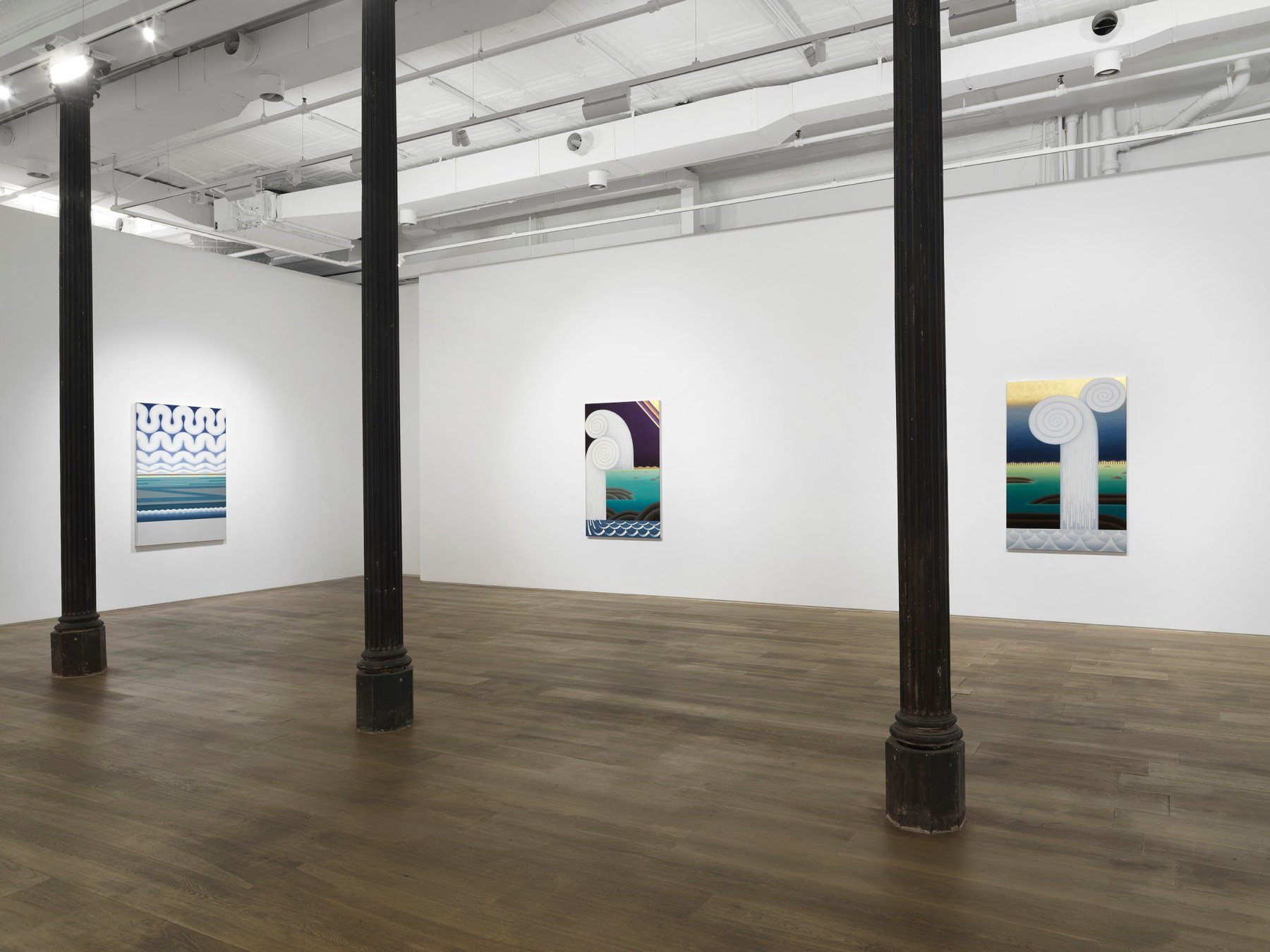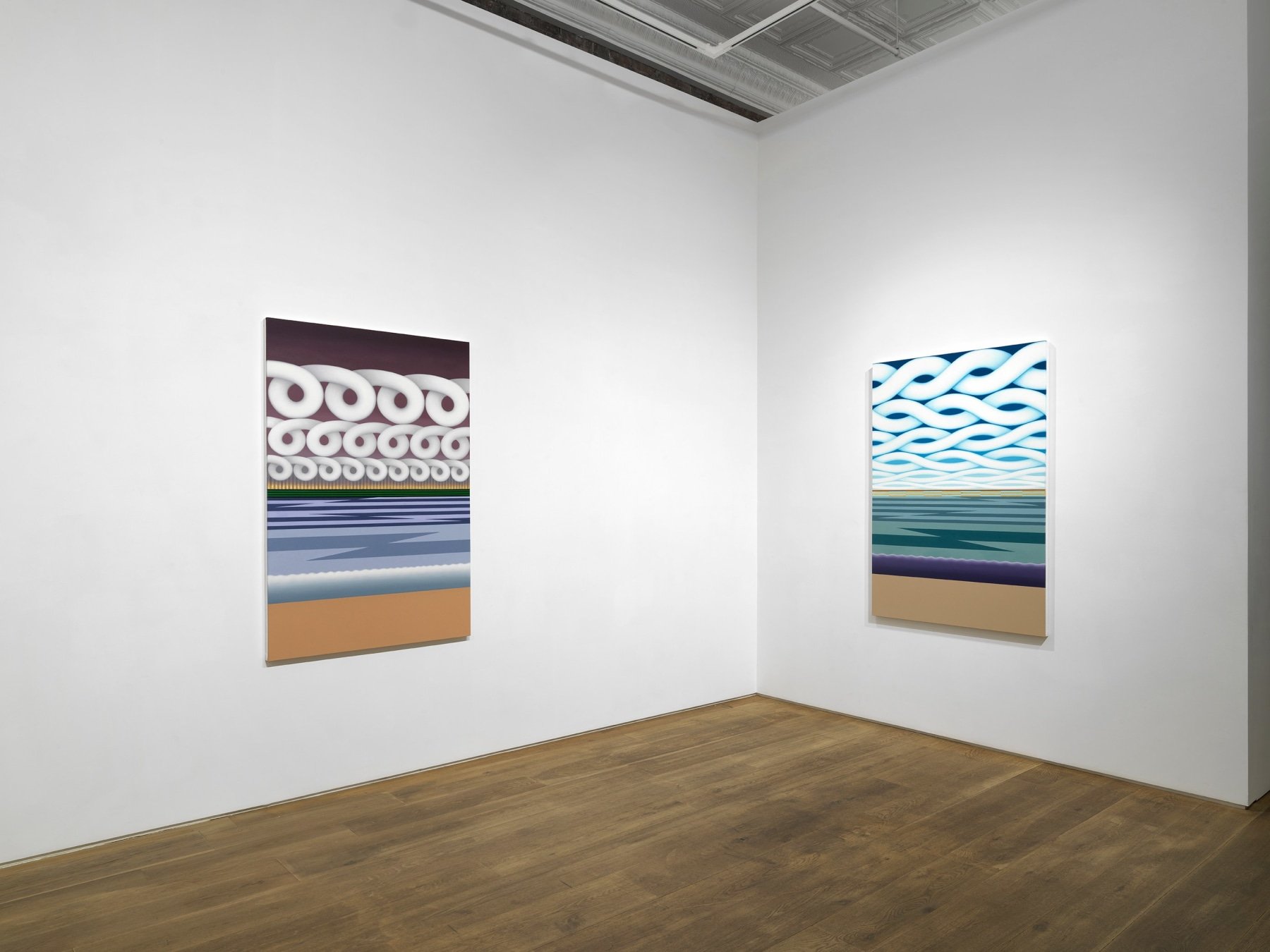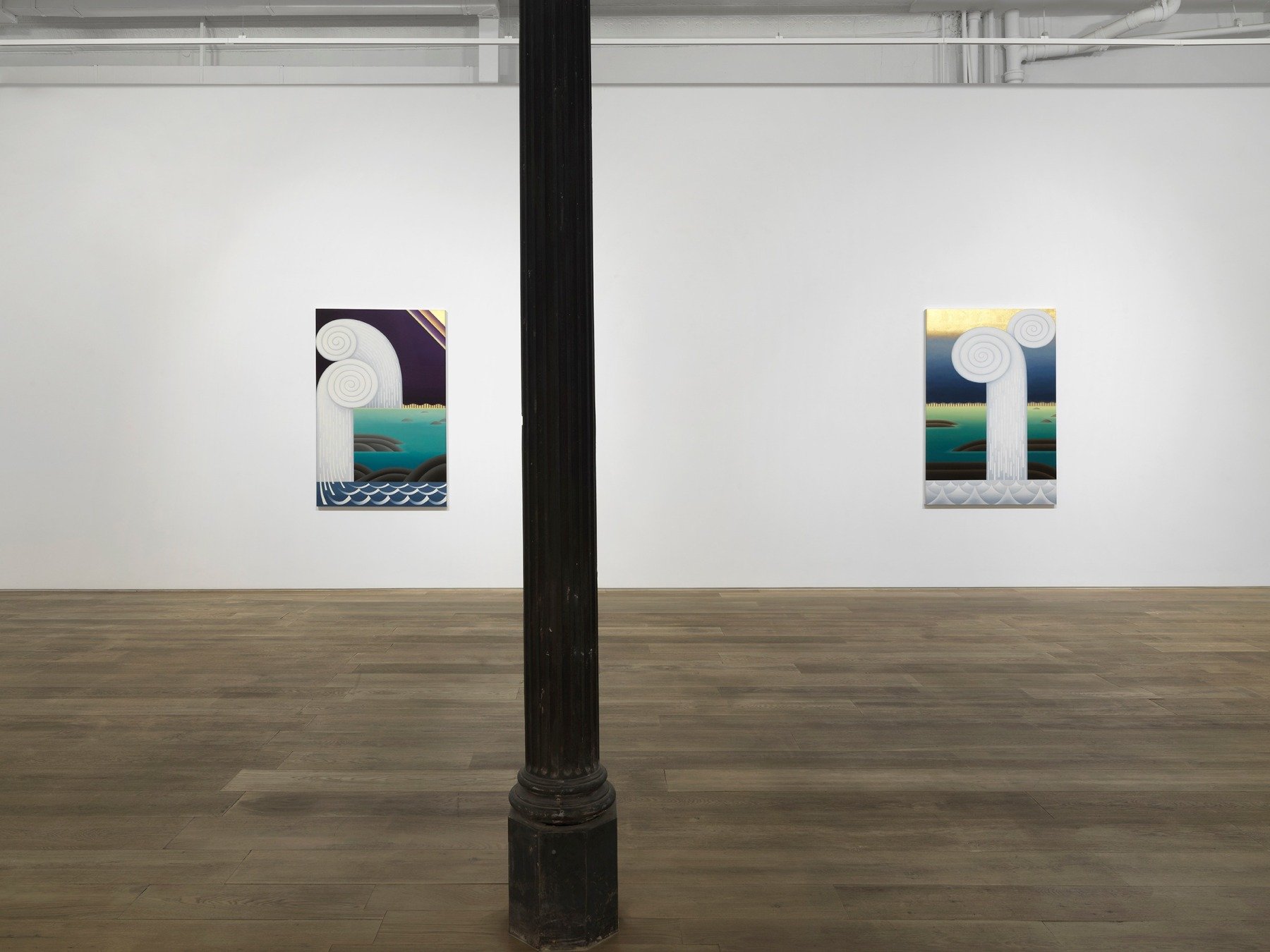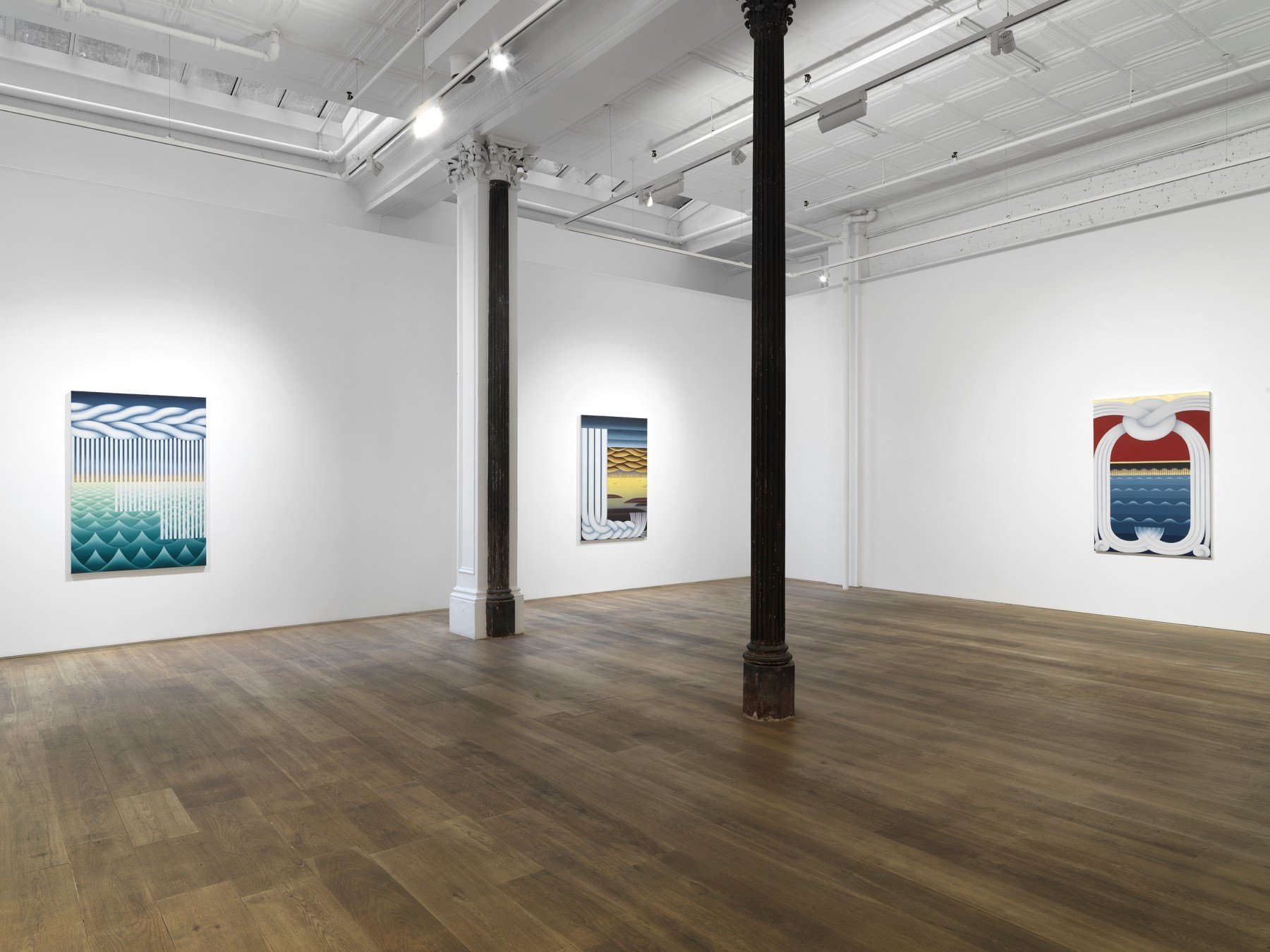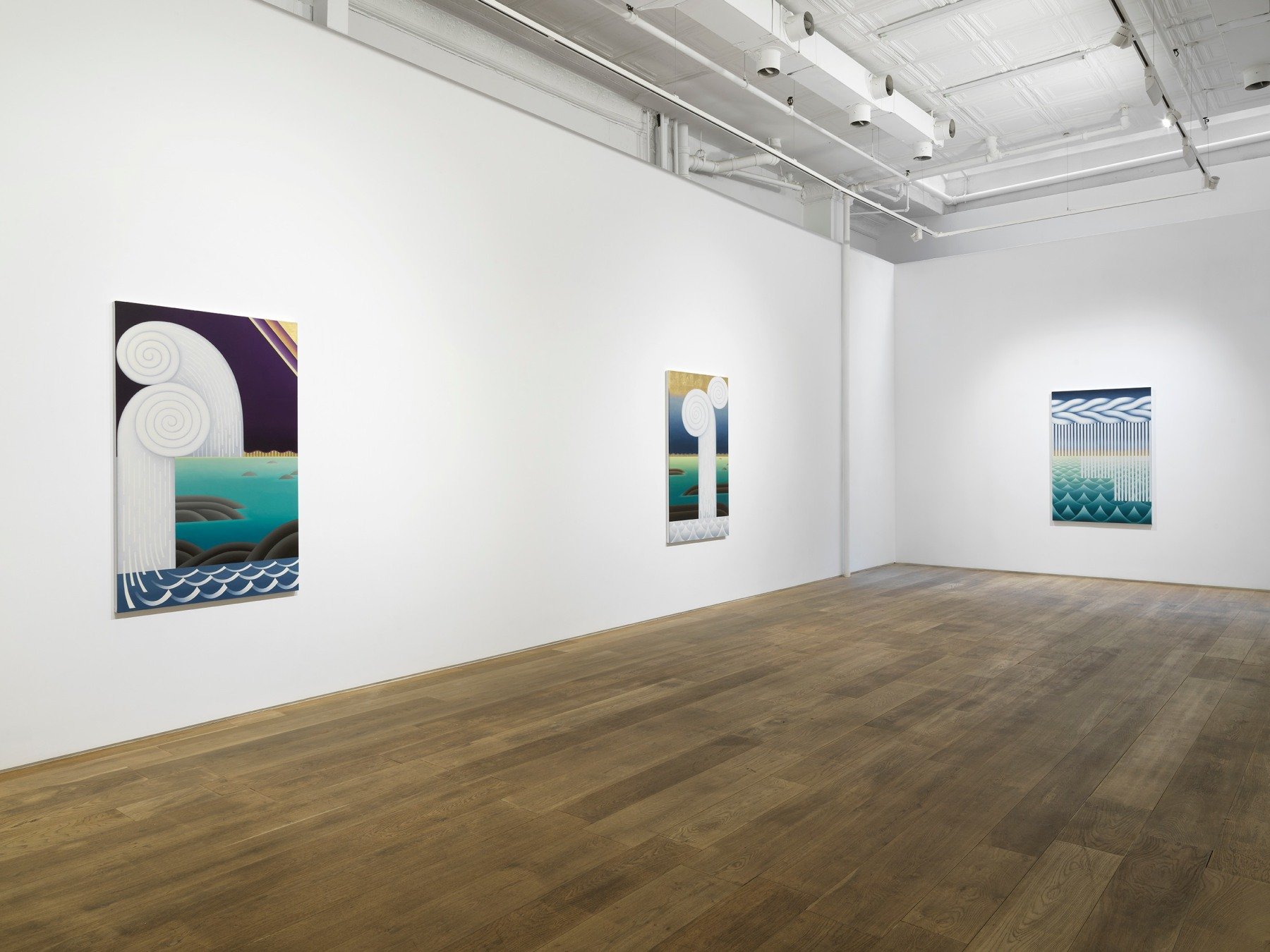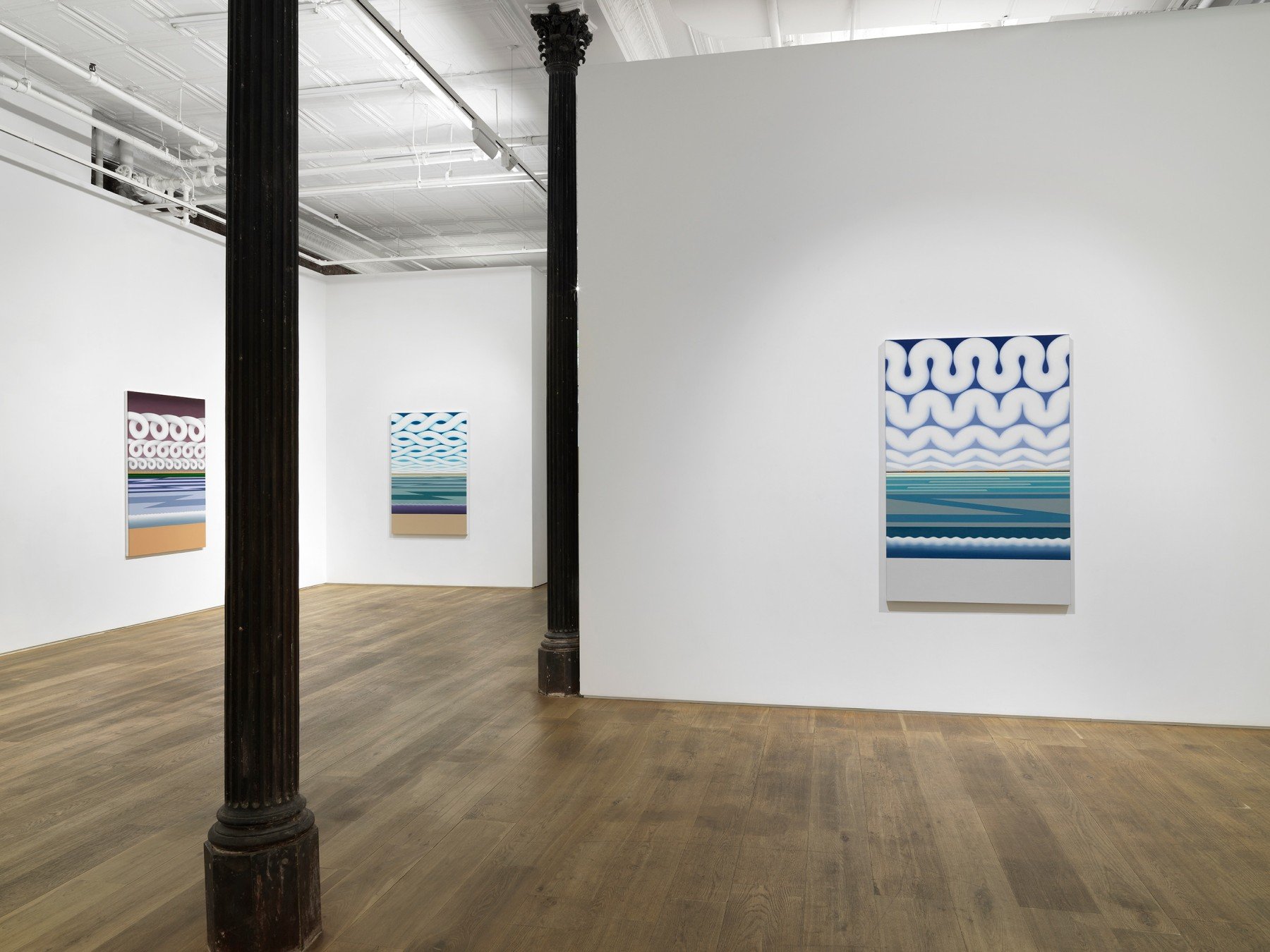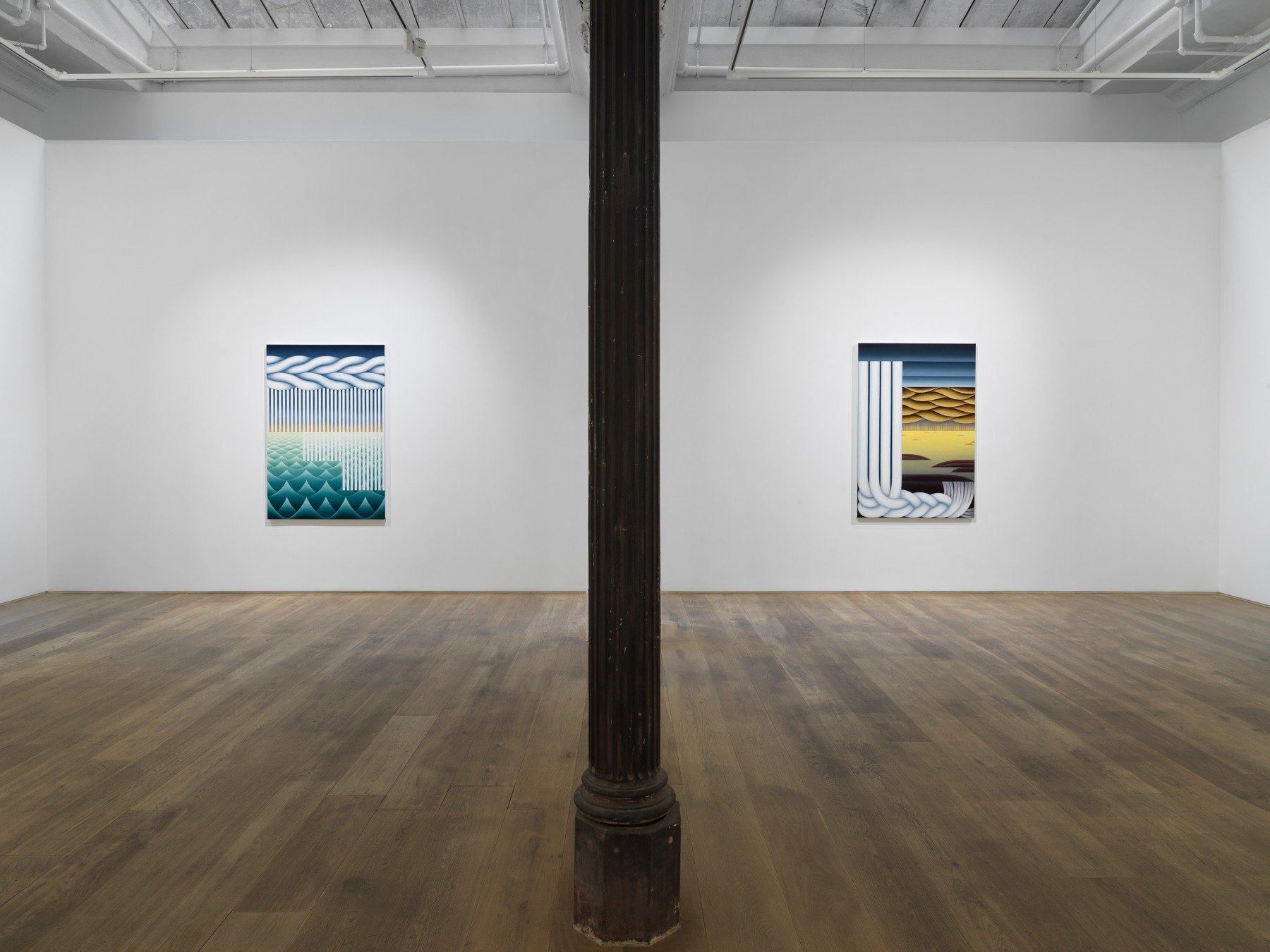Ortuzar Projects - New York - May 5-June 17, 2023
New Paintings
Ortuzar Projects is pleased to present Takako Yamaguchi: New Paintings, the gallery’s first exhibition with Los Angeles–based artist Takako Yamaguchi (b. 1952, Okayama, Japan).
Yamaguchi’s ten seascapes, each sixty by forty inches, are rendered in oil and bronze leaf. Drawing on a diverse array of visual traditions from various parallel art histories, Yamaguchi has long sought to challenge the myth of an ostensibly race-neutral International Modernism through her work’s elaboration upon it with aesthetics of local, national, and ethnic identity. Since the 1980s, Yamaguchi has produced focused series that interweave motifs pulled from Japanese screens and kimono textiles with figures or styles derived from Western art movements, including 19th-century Romanticism, Mexican Muralism, and Art Nouveau. In this new series, the artist’s uniquely syncretic approach destabilizes the conventions of both European and Japanese landscape traditions, and through their collision, creates a dialogue between aesthetic frameworks historically at odds.
Yamaguchi’s paintings have periodically explored the idea of “abstractions in reverse,” an attempt by the artist to move against the current of 20th-century Western art history by traveling backwards in time, from pure abstraction toward illusionism. Arriving at a distinct visual language that resides in a space she calls “semi-abstraction,” Yamaguchi’s works cultivate a tension between naturalism, abstraction, and craft. With an awareness of precedents such as the Transcendental Painting Group–a constellation of artists active in 1930s New Mexico who arrived at a form of semi-abstraction that was influenced less by the European avant-garde than by Theosophy and their attempts to illustrate its spiritual ideas–Yamaguchi questions the historical dismissal of works that fail to arrive at abstraction through a purely formalist logic. Is this kind of work’s occupation of an indeterminate space simply a failure of nerve? As if in reply to this dead-end thinking, Yamaguchi’s folding together of incompatible aesthetic frameworks forms a new space for seemingly limitless experimentation and play.
A uniform horizon divides each canvas in two, separating the oceanic from the atmospheric. Despite the stark geometry that bifurcates her uniform canvases, the continual movement of water, from waves to vapor to clouds to rain, and the shifting times of day, undoes the regularity of Yamaguchi’s serial works. The artist further creates subtle gradation that imbue her richly saturated paintings with an illusionism that is in stark contrast to the bronze leaf that sits as a reflective surface on the painting’s substrate. A glowing metallic sunrise is interrupted by clean lines of stark white rain; a heavy downpour braids itself into rivers, unfurling into rivulets like unwound thread; a teal and turquoise sea meets a monochrome bar of sand. Natural elements like clouds, waves, and mountainous islands are made into recurring symbols; repeating like scales of fish, zig-zagging, looping, or braiding together. Moving between near-naturalism and something more akin to hard-edged painting, the elements variably recede into the picture plane or sit on top of each other, obfuscating the infinite horizon behind them, framing it, letting the viewer in.
Text and Images courtesy of Ortuzar
